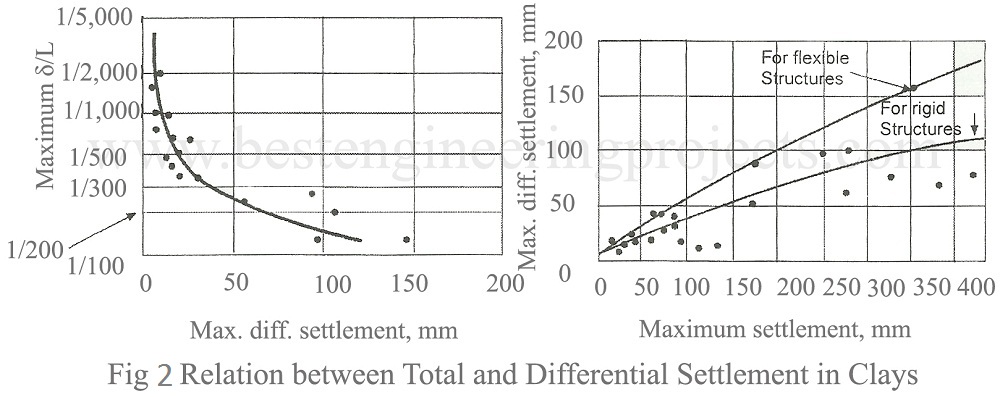Based on actual observations on buildings Bjerrurn (1963) has provided some relationships between total and differential settlement for sands and clay.
These are shown in Figs.1 and 2 for sands and clays respectively. It is revealed from the graphs that, in granular soils, the minimum differential settlement can be equal to the maximum permissible settlement. While in clays the differential settlement is much less than the maximum permissible settlement. In sands, the maximum differential settlement seldom exceeds 3/4 of the total settlement, while in clays it seldom exceeds 1/2 of the maximum total settlement. Using the graphs of Figs.1 and 2, the maximum permissible settlement can be estimated,
Knowing the nature of structure, a permissible is selected. Using the appropriate curve, the corresponding differential settlement and maximum permissible total settlement is obtained. The actual settlement likely to experience by the subsequent section. This value should be less than the permissible settlement found from the curves presented by Bjerrum.
The type of damage likely to be expected from angular distortion is presented below.
| Types of Problem | Angular Distortion |
| Difficulty with machineries sensitive to settlement
Danger for frames with diagonals Limits for buildings where cracking is not possible Limits where cracking in panel walls is to be expected or where difficulties with over head cranes are to be expected Limits where tilting of high buildings may be noticeable. Considerable cracking in panel walls. Safe limit for flexible brick wall where h/L<1/4 Limits where structural damage may occur |
1/750
1/600 1/500 1/300
1/250
1/150 1/150 |

